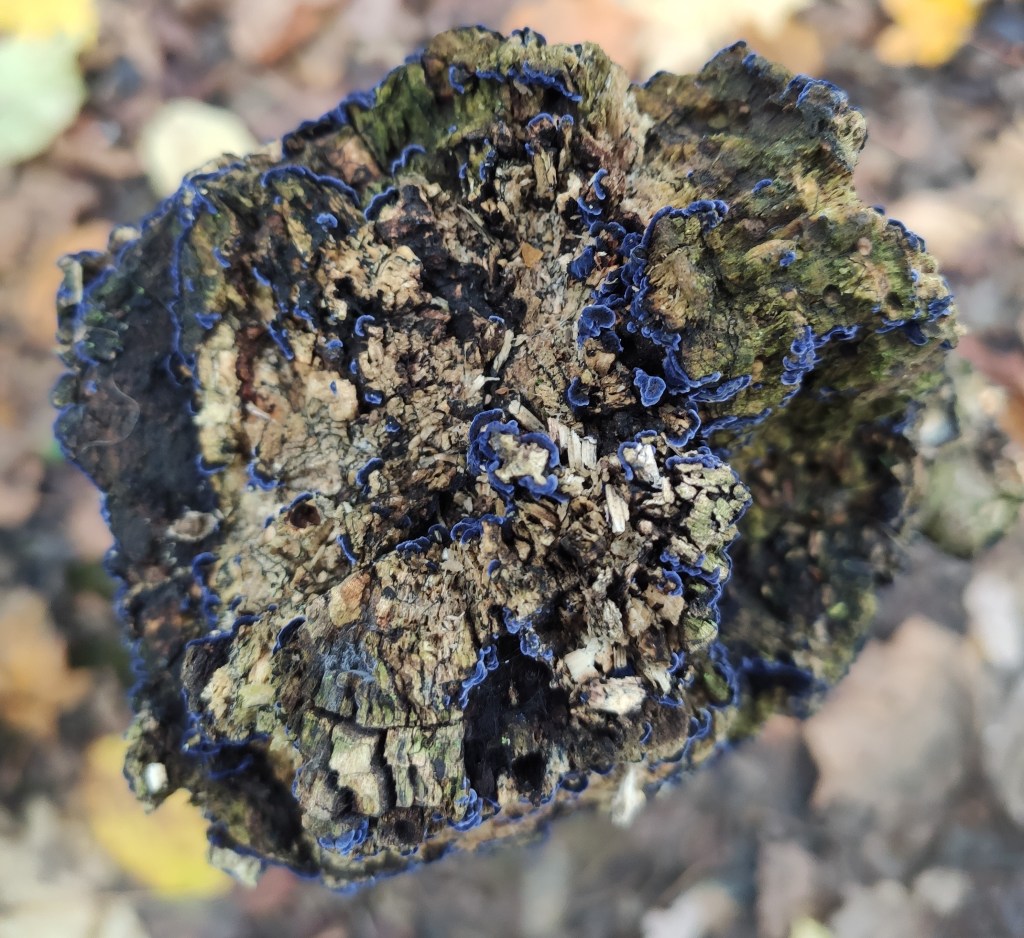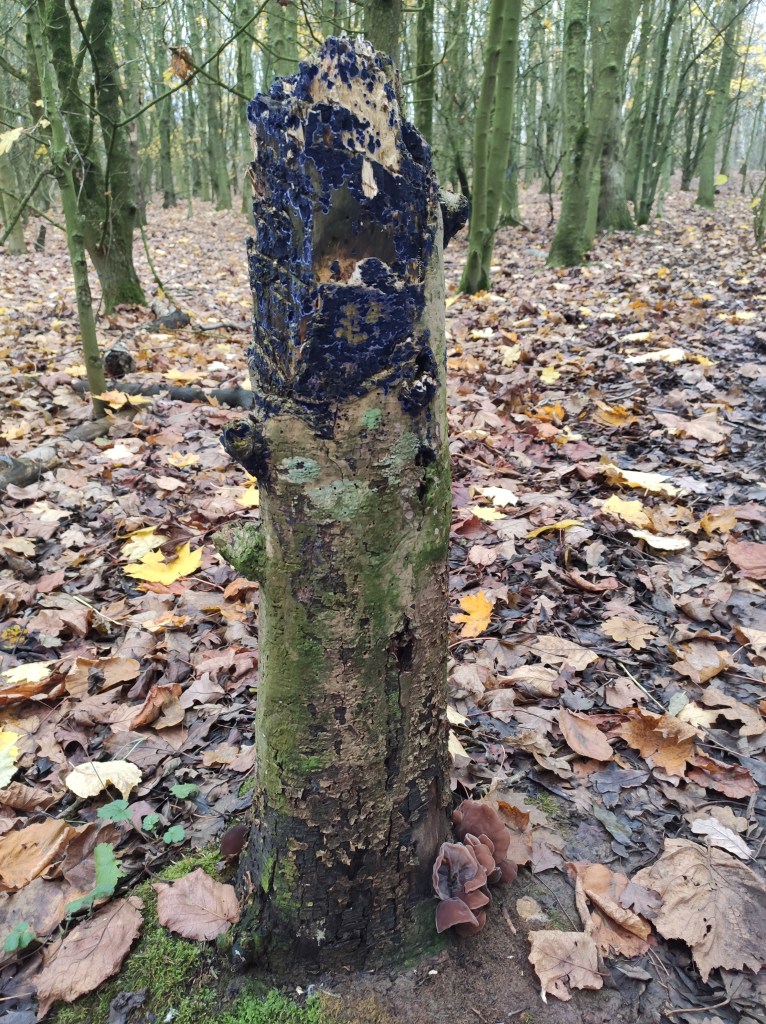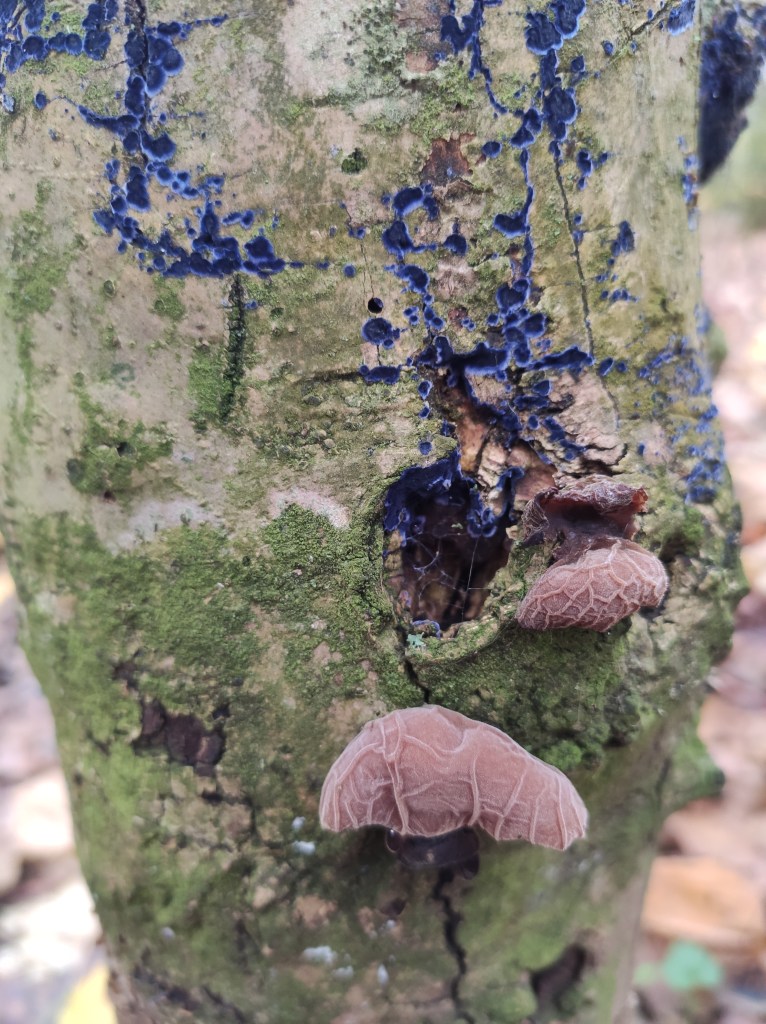
At almost the end of a delightful walk spotting fungal treasures in a deciduous wood on a rewilded old train track in Bilsthorpe, rural Nottinghamshire, I spotted some lovely Auricularia auricula-judae (wood ears) on a gnarly, jaggedy, tall stump of a tree. I then looked up and wondered how I could have missed the most incredible, midnight blue covering almost half of the wood. In my excitement at my new discovery, my photographs came out a little unfocused.

This beauty is resupinate, meaning it grows flat on its substrate and it is saprobic – feeding off dead matter. The top view above shows the fungus weaving between all parts of the wood. It can be seen all year round, the deep blue cobalt colour with a lighter or whiteish margin. It grow in smaller patches which sometimes merge as it spreads across its substrate. Cobalt crust loses its vividity with age.

I have to admit I am unsure of what the tree is. Cobalt crust is said to have a preference for ash and hazel and other broad leaved trees. Auricularia auricula-judae is most commonly found on elder, though also found on ash, hazel and other deciduous trees. The tall stump (or small snag), was covered in a multitude of other lichens but right at the bottom the bark is visible a little and could look like ash, which would line up with the cross-over of both these species.

Terana caerulea is said to be occasional in England and Wales. The 587 records on Cate2 for the UK, run by The Fungus Conservation Trust, shows records concentrated to England, particularly the south, notably in the south-west, in Cornwall; 3 records from Scotland and none in Northern Ireland. The records span from 1909 to October 2022. They are on a range of broad-leaved, deciduous trees including Oak, Ash and Elm and gorse. The National Biodiversity Data Centre for the island of Ireland has 3 records, 2 from County Kerry and 1 from County Limerick, dating from January and November, 2014 and 2015.
Basic Profile
Scientific name: Terana caerulea (formerly Pulcherricium caeruleum still present in some books)
Common English names: Cobalt Crust; Velvet Blue Spread
Size of fruiting body: Variable 0.1 x 0.5cm thick
Spores: hyaline 6.5-9 x 4.5-5.5 µm
Gills: None
Edibility: No!
Lookalikes: A few fungal crusts and lichens, but none have the vivid cobalt colour, though it does fade with age. First Nature lists Stereum subtomentosum as being similar, but has a grey or yellow colour.
On the Red Data List (extinct/critically endangered/endangered/vulnerable/near threatened): No
References:
Cate2 Database, managed and maintained by The Fungus Conservation Trust
National Biodiversity Data Centre
Red Data List, British Mycological Society
http://iucn.ekoo.se/, The Global Fungal Red List Initiative
Collins Complete Guide to British Mushrooms & Toadstools, Paul Sterry & Barry Hughes, 2009
Mushrooms and Toadstools of Britain and Europe, Edmund Garnweidner, 1994
Mushrooms, Patrick Hardy, 2013
The Encyclopedia of Fungi of Britain and Europe, Michael Jordan, 2004









